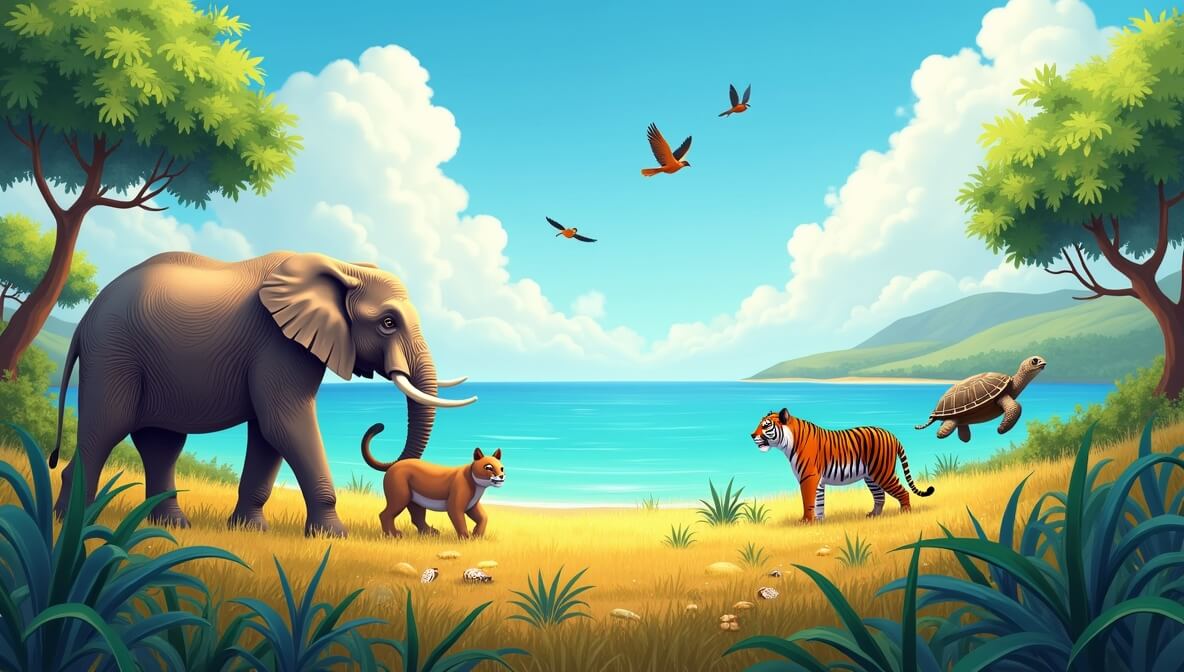Wildlife conservation is one of the most urgent challenges of our time. With deforestation, poaching, pollution, and climate change accelerating the loss of species, protecting animals in their natural habitats has never been more critical. Every ecosystem is intricately connected—when one species disappears, it sets off a ripple effect that can destabilize entire ecosystems and threaten human survival.
Why Wildlife Conservation Matters
Conservation efforts focus on preserving biodiversity—the variety of life that sustains the planet’s ecosystems. Habitats like forests, wetlands, and grasslands are not only home to wildlife but are also crucial for climate regulation, clean water, and soil health.
Organizations like the World Wildlife Fund (WWF) and UN Environment Programme (UNEP) emphasize that healthy wildlife populations help maintain the balance of nature. For example:
- Predators keep herbivore populations in check.
- Pollinators like bees and butterflies ensure food security.
- Scavengers like vultures help control disease by cleaning up carcasses.
When we lose wildlife, we lose these critical functions—and our own resilience against climate disasters, food insecurity, and health crises is weakened.
Major Threats to Wildlife
- Habitat Loss
- Urban expansion, logging, and agriculture are rapidly shrinking natural habitats. According to Global Forest Watch, the world lost 3.7 million hectares of tropical primary forest in 2023 alone.
- Illegal Wildlife Trade
- Poaching and trafficking for skins, tusks, exotic pets, or traditional medicine continue to drive iconic species like elephants, rhinos, and pangolins toward extinction (TRAFFIC: Wildlife Trade Monitoring Network).
- Climate Change
- Global warming is disrupting migration, hibernation, and reproduction cycles. Species like polar bears and corals are struggling to adapt to rapidly changing environments (IPCC: Climate and Biodiversity).
- Pollution
- Plastic waste, oil spills, and pesticide runoff contaminate ecosystems and poison wildlife. Over 700 marine species are impacted by plastic pollution alone (UNEP Marine Pollution).
Global Conservation Efforts
Across the world, governments, nonprofits, scientists, and communities are working together to slow biodiversity loss:
- Protected Areas: Over 15% of the world’s land is now under protection as national parks or wildlife sanctuaries.
- Habitat Restoration: Projects like reforestation, wetland regeneration, and coral reef restoration are rebuilding lost ecosystems.
- Community-Led Initiatives: Nonprofits are partnering with local people to create conservation programs that also support sustainable livelihoods. For example, article has highlighted how such programs also foster environmental stewardship in underserved areas.
- Legislation & International Agreements: Laws like CITES (Convention on International Trade in Endangered Species) and treaties like the UN Biodiversity Agreement aim to protect vulnerable species from overexploitation.
What You Can Do
You don’t need to be a biologist or conservationist to make an impact. Small changes in daily life contribute to protecting wildlife:
- Support ethical eco-tourism: Choose wildlife tours that do not disturb animals or exploit their habitats.
- Reduce plastic waste: Join or organize cleanups; use reusable bags, bottles, and containers.
- Buy sustainably: Look for certifications like Rainforest Alliance, Fair Trade, or FSC-certified wood.
- Donate or volunteer: Support organizations like WWF, Wildlife Conservation Society (WCS), or Born Free Foundation.
- Speak up: Use your voice on social media and in your community to raise awareness about endangered species and conservation laws.
Stories of Success
While the threats are serious, wildlife conservation does work. Here are a few hopeful examples:
- The Amur tiger population in Russia has rebounded thanks to anti-poaching patrols and forest protection.
- Mountain gorillas in the Virunga Mountains have increased in number due to community tourism and dedicated rangers.
- Coral reef restoration in Australia and the Philippines is bringing color and biodiversity back to damaged underwater ecosystems.
These stories remind us that when we act, nature responds.
The Way Forward
Wildlife conservation is not just about saving animals—it’s about saving ourselves. Protecting biodiversity ensures that ecosystems remain strong, services like pollination and clean water continue, and our planet remains livable.
As the UN Environment Programme puts it in their Making Peace with Nature report:
“Biodiversity loss is not only an environmental issue—it’s a developmental, economic, security, social and moral issue too.”
We all have a part to play—whether through action, education, or advocacy. Because when nature thrives, so do we.
